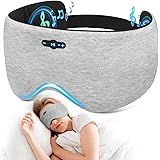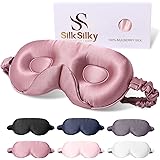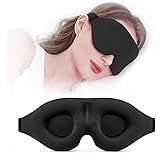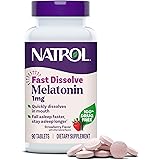For many outdoor enthusiasts, a restless night under the stars is an all too familiar experience. The cold ground seeping through your sleeping pad, the unyielding roots and rocks digging into your back – these are common complaints that can quickly diminish the joy of a backpacking trip. You might feel that “sleeping like garbage” is just an inevitable part of the backcountry adventure, a sacrifice for the stunning views and fresh air.
However, as the video above suggests, it doesn’t have to be this way. The simple yet often overlooked solution for achieving truly restorative sleep outdoors lies in rethinking your sleep system. Instead of relying on a single pad, consider the transformative power of using two sleeping pads: a strategic combination that dramatically enhances both warmth and comfort.
Combining Closed-Cell Foam & Self-Inflating Pads for Ultimate Backpacking Sleep
Many backpackers start with a basic self-inflating pad, hoping it will provide enough insulation and cushioning. The narrator in the video experienced this firsthand, initially using a three-quarter pad. While upgrading to a full-length self-inflating pad solved the issue of cold feet, the fundamental problem of inadequate cushioning persisted. This is where the innovative approach of layering two sleeping pads comes into play, creating a sleep system that addresses both crucial aspects of a good night’s rest.
Why Two Sleeping Pads Make a Difference
The concept of combining two sleeping pads might sound counterintuitive, especially for those meticulously counting every ounce of gear. Yet, the benefits far outweigh the minimal extra weight for most trips, particularly those lasting three to five nights. This dual-pad strategy fundamentally enhances your sleep system’s R-value and cushioning, tackling the primary sources of discomfort in the backcountry.
- Enhanced Insulation (R-Value): A closed-cell foam pad acts as an excellent primary barrier against the cold ground. Its closed-cell structure traps air efficiently, preventing heat loss from your body downwards. When you layer a self-inflating pad on top, you significantly boost the overall R-value of your sleep system. This combined insulation creates a much warmer barrier, protecting you from frigid temperatures, especially in colder climates or at higher elevations.
- Superior Cushioning and Pressure Relief: While a self-inflating pad offers some loft, it often compresses under pressure points like hips and shoulders, allowing roots and rocks to still cause discomfort. A closed-cell foam pad provides a firm, supportive base. When paired with the softer, contouring surface of a self-inflating pad, it distributes your weight more effectively, eliminating those painful pressure points and offering an unparalleled level of cushioning.
- Durability and Puncture Protection: A closed-cell foam pad serves as an extra layer of protection for your more delicate inflatable pad. It shields the inflatable pad from sharp objects, abrasive surfaces, and general wear and tear. This simple addition can extend the lifespan of your more expensive inflatable gear, offering peace of mind even on rough terrain.
Understanding Your Pads: Closed-Cell Foam vs. Self-Inflating
To fully appreciate the benefits of a dual sleeping pad system, it helps to understand the distinct characteristics of each type of pad. Both have their strengths, and together, they create a synergistic effect for optimal outdoor sleeping comfort. The choice depends on your specific needs and the conditions you expect.
Closed-Cell Foam Pads (CCF)
These are the simpler, more rugged option. Made from dense foam with tiny, sealed air pockets, they offer reliable insulation that won’t be compromised by punctures. They are lightweight, relatively inexpensive, and virtually indestructible. Common examples include the classic accordion-style pads.
- Pros: Excellent durability, reliable insulation (even when wet), affordable, lightweight for their R-value, can double as a sitting pad.
- Cons: Bulky when packed (often strapped to the outside of a pack), less comfortable than inflatable pads on their own.
Self-Inflating Pads
These pads contain open-cell foam and a valve. When the valve is opened, the foam expands, drawing air into the pad. A few additional breaths typically firm it up. They offer a good balance of insulation, comfort, and packability, making them a popular choice for many backpackers.
- Pros: Good comfort, decent insulation, more compact than CCF pads, relatively easy to set up.
- Cons: Susceptible to punctures (rendering them useless if deflated), can be heavier and more expensive than CCF pads, takes longer to dry if internal foam gets wet.
Selecting Your Perfect Two Sleeping Pads Pair
Choosing the right combination of two sleeping pads involves considering your personal needs, the climate you’ll be in, and your overall gear strategy. A basic closed-cell foam pad typically offers an R-value between 1.5 and 2.5. Many self-inflating pads range from 2.0 to 5.0 R-value. Combining these can easily push your total system R-value to 4.0 or higher, providing excellent three-season insulation, and even four-season comfort with the right choices.
- Closed-Cell Foam Pad Selection: Opt for a lightweight, full-length pad that offers a good foundational R-value (e.g., 2.0). Many popular models are available and provide ample ground insulation.
- Self-Inflating Pad Selection: Focus on packability and a comfortable thickness. A full-length pad is generally preferred for complete body insulation. Consider a pad with an R-value suitable for the conditions you anticipate, knowing that your CCF pad will add a significant boost.
For example, pairing a 2.0 R-value closed-cell foam pad with a 3.5 R-value self-inflating pad gives you a combined system of 5.5 R-value. This setup is perfect for cold shoulder seasons or even mild winter camping, ensuring your body heat stays where it belongs.
Weighing the Benefits Against the Weight
The most common reservation about using two sleeping pads is, of course, the additional weight. While the narrator acknowledges this concern, they emphasize that the quality of sleep profoundly offsets the extra ounces. For typical backpacking trips, say three to five nights, the mental and physical benefits of superior sleep are invaluable.
A good night’s rest translates to more energy on the trail, better decision-making, improved mood, and overall greater enjoyment of your trip. Conversely, poor sleep can lead to fatigue, irritability, and even increased risk of injury. The added comfort from two sleeping pads means you wake up refreshed, ready to tackle the day’s hike with vigor.
For context, a lightweight closed-cell foam pad might add just 10-14 ounces to your base weight. Compared to the total weight of a multi-day pack, this is often a small sacrifice for such a significant gain in comfort. However, for extreme ultralight endeavors or long thru-hikes, where every gram counts, backpackers might still opt for a single, high-R-value inflatable pad. Yet, for most recreational backpackers, the dual-pad system offers an optimal balance.
Beyond Comfort: Additional Advantages
The advantages of two sleeping pads extend beyond just warmth and cushioning. This robust system provides layers of versatility and reliability that a single pad cannot offer. For instance, if your inflatable pad suffers a puncture, you still have the closed-cell foam pad for essential insulation and a basic sleeping surface. This can be a trip-saver in the backcountry.
Moreover, the closed-cell foam pad is incredibly versatile. It can be pulled out during lunch breaks for a comfortable seat on cold or wet ground. It can also be used as a makeshift splint or for additional padding inside your backpack. The simplicity and resilience of the closed-cell foam pad combined with the plush comfort of a self-inflating pad truly create a superior outdoor sleeping experience. Try using two sleeping pads on your next adventure and discover the difference.








